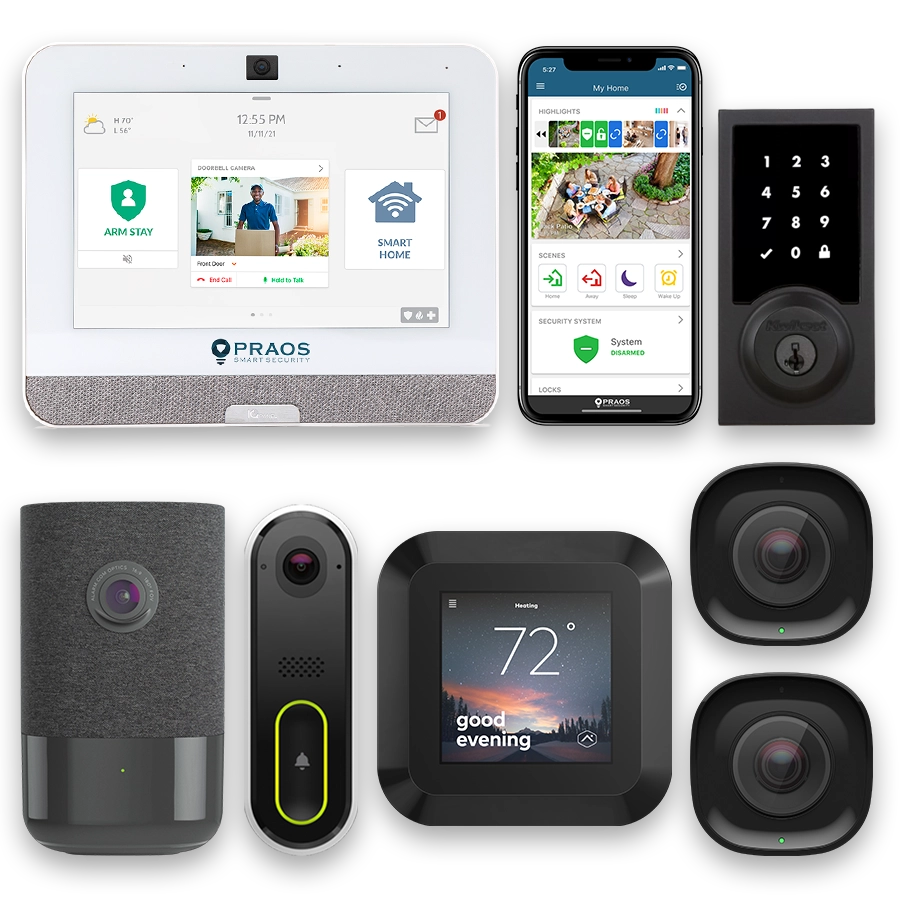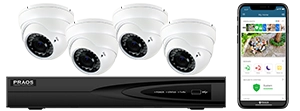- Overview of CCTV Systems in Urban Areas
- Common Threats and Vulnerabilities
- Regulatory and Compliance Landscape
- Cyber Defense Strategies for CCTV Systems
- Impact of Artificial Intelligence and Machine Learning
- Best Practices and Case Studies of Successful Implementation in Cities
- Future Trends and Emerging Technologies
- Conclusion and Policy Recommendations
Overview of CCTV Systems in Urban Areas
Closed-Circuit Television (CCTV) systems play a pivotal role in enhancing public safety and surveillance in urban areas. These systems are extensively deployed in city centers, transportation hubs, residential areas, and other critical infrastructure to monitor activities, deter crime, and provide valuable evidence for investigations.
Modern CCTV systems are not merely passive recording devices. They have evolved to include advanced technologies such as high-definition cameras, remote access capabilities, and integration with other security systems. Networked CCTV systems allow real-time monitoring and quick response to potential security incidents. Such features are particularly beneficial in densely populated urban settings, where rapid intervention is often necessary.
Urban surveillance networks can consist of thousands of cameras, generating vast amounts of data that need to be processed and stored efficiently. The integration of video analytics, including motion detection and facial recognition, enhances the functionality of these systems, offering automated alerting and sophisticated analysis.
In cities like London and New York, extensive CCTV networks have become a core component of urban security strategies. London’s CCTV system, often cited as one of the most comprehensive in the world, includes approximately 500,000 cameras. These systems are operated by various entities, including local government agencies and private businesses, contributing to a multifaceted surveillance infrastructure.
The effectiveness of CCTV systems in urban areas also hinges on robust infrastructure, including reliable power supplies and resilient communication networks. This ensures the continuous operation of cameras and the seamless transmission of video feeds to monitoring centers, even during adverse conditions.
CCTV systems are increasingly integrated with other municipal systems such as traffic management, emergency response, and public transportation networks. Such integration facilitates the sharing of data and coordination among different agencies, enhancing overall urban safety and efficiency.
While the proliferation of CCTV systems has significantly boosted urban surveillance capabilities, it has also raised concerns regarding privacy and civil liberties. Transparency about the use of surveillance and adherence to regulatory requirements are critical to maintaining public trust. Ensuring that data handling practices comply with relevant privacy standards is essential to prevent misuse and protect individual rights.
Overall, CCTV systems are a vital component of urban infrastructure, providing extensive benefits for public safety and crime prevention. However, their effectiveness depends on the continuous advancement and careful implementation, addressing both technological and ethical considerations.
Common Threats and Vulnerabilities
2. Common Threats and Vulnerabilities
CCTV systems in urban areas, while essential for maintaining public safety and security, are exposed to various threats and vulnerabilities that can compromise their effectiveness. Understanding these risks is crucial for developing robust cyber defense strategies.
Physical Security Threats
Vandalism and theft of CCTV equipment are significant concerns. Cameras, cables, and recording equipment can be physically damaged or stolen, leading to loss of surveillance capabilities. Proper housing and strategic placement can mitigate these risks.
Network and Data Security Threats
As CCTV systems increasingly integrate with networked environments, they become susceptible to cyber threats such as:
- Data Breaches: Unauthorized access to footage or recorded data can lead to privacy violations and misuse of sensitive information. This is often due to weak encryption methods or inadequate access controls.
- Malware Attacks: Cybercriminals can deploy malicious software to disrupt camera functions, delete footage, or gain control over the system.
- Denial of Service (DoS) Attacks: Overloading the network with excessive traffic can lead to system outages, making it impossible to monitor areas in real-time.
Software Vulnerabilities
CCTV systems often rely on various software components, which may harbor vulnerabilities that can be exploited. These include:
- Outdated Firmware: Failure to regularly update firmware can leave systems open to known exploits.
- Insecure Application Development: Bugs and poorly written code can serve as entry points for attackers.
Human Factors
Human error also plays a significant role in compromising CCTV system security. Common issues include:
- Default Passwords: Not changing default passwords leaves systems vulnerable to unauthorized access.
- Inadequate Training: Lack of proper training for personnel managing the systems can result in mishandling and improper configuration.
Summary of Common Threats and Vulnerabilities
| Threat/Vulnerability | Description |
|---|---|
| Vandalism | Physical damage or destruction of hardware and infrastructure. |
| Data Breaches | Unauthorized access to or theft of surveillance data. |
| Malware Attacks | Introduction of malicious software to disrupt operations. |
| Denial of Service (DoS) Attacks | Overloading network to cause service outages. |
| Outdated Firmware | Lack of updates leading to security vulnerabilities. |
| Insecure Application Development | Security flaws in the software code. |
| Default Passwords | Failure to change default settings, leading to easy access for attackers. |
| Inadequate Training | Improper handling and configuration due to lack of knowledge. |
Addressing these common threats and vulnerabilities is imperative for enhancing the resilience of CCTV systems in urban areas. By taking a proactive approach to securing both the physical and digital aspects of these systems, municipalities can ensure they remain effective tools for public safety.
Regulatory and Compliance Landscape
In the realm of CCTV systems used to monitor urban areas, the regulatory and compliance landscape is a critical component ensuring the security and effectiveness of these systems. Compliance with regulatory requirements helps to safeguard the data captured and stored by these systems, protecting it from unauthorized access and breaches.
The European Union’s General Data Protection Regulation (GDPR) is one of the most significant regulatory frameworks impacting CCTV systems. GDPR mandates strict data protection and privacy guidelines for organizations handling the personal data of EU citizens. CCTV operators must ensure that the footage collected is adequately protected, that individuals are informed about the presence of cameras, and that the data is stored securely and only for as long as necessary.
In the United States, the Federal Information Security Management Act (FISMA) focuses on protecting federal data, which includes aspects of surveillance systems integrated into federal infrastructures. This act mandates that federal agencies implement comprehensive security programs to ensure the confidentiality, integrity, and availability of information systems, including CCTV networks.
Additionally, many states and municipalities have enacted their own privacy laws and regulations that oversee the use of surveillance technologies. For example, the California Consumer Privacy Act (CCPA) provides Californian residents with rights regarding the collection and use of their personal data, which includes footage collected by commercial CCTV systems.
Beyond national and regional regulations, there are also industry-specific standards such as the Payment Card Industry Data Security Standard (PCI DSS) for CCTV systems used in environments where payment card information is processed. These standards require organizations to implement stringent security measures to protect sensitive data against breaches and cyber threats.
Moreover, the International Organization for Standardization (ISO) has established several standards related to information security management systems (ISMS) that apply to surveillance systems. The ISO/IEC 27001 standard specifies the requirements for establishing, implementing, maintaining, and continually improving an ISMS, which can encompass CCTV systems.
Compliance with these regulations often involves implementing data encryption, access control mechanisms, and regular security audits. Organizations operating CCTV systems must adopt these measures to ensure they meet regulatory requirements and protect their data against cyber threats.
A key aspect of achieving compliance is maintaining ongoing awareness and understanding of the evolving regulatory landscape. This necessitates regular training for personnel, continuous monitoring of regulatory changes, and updating security practices accordingly.
Ultimately, adherence to regulatory and compliance guidelines not only helps in mitigating legal risks but also enhances the overall resilience and trustworthiness of CCTV systems monitoring urban areas.
Cyber Defense Strategies for CCTV Systems
In today’s urban environments, the increasing reliance on Closed-Circuit Television (CCTV) systems for surveillance and security makes it imperative to implement robust cyber defense strategies. This chapter examines the various strategies that can be employed to enhance the resilience of CCTV systems against cyber threats.
Network Segmentation
One of the primary strategies for safeguarding CCTV systems is network segmentation. By isolating the CCTV network from other corporate or public networks, you limit the attack surface available to potential intruders. Network segmentation can be implemented through Virtual Local Area Networks (VLANs) and firewalls, ensuring that even if one part of the network is compromised, the intruder cannot easily access other critical systems.
Encryption
Encrypting data both in transit and at rest is crucial for protecting sensitive information captured by CCTV cameras. Techniques such as SSL/TLS for data transmission and AES for data storage are commonly used to ensure that unauthorized entities cannot intercept or breach the data. This makes it extremely difficult for cybercriminals to exploit intercepted data.
Authentication and Access Control
Implementing strong authentication mechanisms and access controls is vital. Multi-Factor Authentication (MFA) and Role-Based Access Control (RBAC) can significantly increase the security of CCTV systems. By ensuring that only authorized personnel can access or manage the CCTV systems, you can prevent unauthorized access and potential misuse.
Regular Software Updates and Patch Management
Ensuring that all components of the CCTV system, including cameras, servers, and software platforms, are regularly updated and patched is fundamental to cyber defense. Vulnerabilities in outdated software are a common entry point for cyber-attacks. Regular updates help mitigate these risks by closing security gaps as they are discovered.
Intrusion Detection and Prevention Systems (IDPS)
Deploying Intrusion Detection and Prevention Systems can enhance the cybersecurity posture of CCTV networks. These systems monitor network traffic in real-time and can identify and mitigate suspicious activities. An IDPS can promptly alert administrators to potential threats and, in some cases, automatically block malicious traffic.
Employee Training and Awareness
Human error is often a significant factor in security breaches. Regular training sessions and awareness programs for employees can help mitigate risks. By educating staff on cybersecurity best practices, phishing, social engineering attacks, and the importance of robust password policies, organizations can foster a culture of security awareness.
Incident Response Plan
Having a robust incident response plan is crucial for minimizing the impact of security breaches. This plan should detail the steps to be taken in the event of a cyber-attack, including containment, eradication, recovery, and communication strategies. Regularly testing the incident response plan ensures that all stakeholders are prepared and can act swiftly to mitigate damage.
- Network Segmentation: Isolate CCTV networks from other networks to limit attack surfaces.
- Encryption: Use SSL/TLS for data in transit and AES for data at rest.
- Authentication and Access Control: Implement MFA and RBAC.
- Regular Updates: Keep all software components current with patch management.
- IDPS: Use Intrusion Detection and Prevention Systems for real-time threat monitoring.
- Training: Conduct regular security training and awareness programs.
- Incident Response: Develop and regularly test an incident response plan.
By leveraging these cyber defense strategies, urban areas can significantly strengthen the security and resilience of their CCTV systems. Implementing these measures not only protects against cyber threats but also ensures the continued effectiveness and reliability of surveillance networks in public safety operations.
Impact of Artificial Intelligence and Machine Learning
The integration of Artificial Intelligence (AI) and Machine Learning (ML) into CCTV systems presents significant opportunities to enhance the resilience and effectiveness of surveillance in urban areas. These technologies can transform traditional CCTV systems into intelligent and proactive agents capable of identifying potential threats and responding to incidents with greater accuracy and speed.
AI-Driven Surveillance Capabilities
Modern CCTV systems equipped with AI can analyze video footage in real-time, identifying abnormal activities and alerting authorities instantly. This real-time analysis is achieved through sophisticated algorithms that can detect unusual patterns, such as loitering, unauthorized access, or even unattended bags in public spaces.
One notable application is the use of AI for object recognition and facial recognition. By leveraging large datasets and advanced neural networks, AI can identify and track individuals or objects across multiple camera feeds, providing a level of detail and precision unattainable by human operators alone.
Machine Learning for Predictive Analysis
ML algorithms enable CCTV systems to learn from historical data and improve their predictive capabilities over time. For instance, by analyzing past incidents, these systems can predict potential hotspots for criminal activity and adjust surveillance focus accordingly. This proactive approach helps in preventing incidents before they occur, rather than merely reacting to them.
Moreover, ML can enhance anomaly detection by continuously refining its understanding of what constitutes “normal” behavior in a given environment. Deviations from this baseline can trigger alerts, enabling a faster and more targeted response from security personnel.
Enhancements in Video Quality and Storage Efficiency
AI and ML technologies can also improve video quality and storage efficiency in CCTV systems. AI-based techniques such as super-resolution can enhance the clarity of low-resolution footage, making it easier to identify critical details. Additionally, ML algorithms can compress video data without significant loss of quality, allowing for more efficient storage and faster retrieval of footage.
Automating Routine Tasks and Reducing Manual Interventions
By automating routine tasks like monitoring and basic analysis, AI can significantly reduce the burden on human operators. This automation ensures that security personnel can focus on more complex and high-stakes situations, enhancing overall operational efficiency. For example, AI can automatically filter out irrelevant footage, allowing operators to review only significant events, thus saving time and resources.
Challenges and Ethical Considerations
Despite the numerous benefits, the deployment of AI and ML in CCTV systems also raises several challenges and ethical considerations. The accuracy of these technologies depends heavily on the quality and diversity of the training data. Biases in the data can lead to inaccurate predictions and potential discrimination. Ensuring transparency in AI decision-making processes and safeguarding privacy are critical to addressing these concerns.
Moreover, the implementation of AI-driven surveillance requires robust cybersecurity measures to protect against hacking and other malicious activities. AI systems must be designed with stringent security protocols to prevent unauthorized access and manipulation.
- Data Privacy: Ensuring that AI and ML technologies comply with data privacy regulations and do not infringe on individual rights.
- Bias Mitigation: Implementing strategies to detect and mitigate biases in AI algorithms to ensure fair and accurate surveillance.
- Transparency and Accountability: Maintaining clear documentation of AI systems’ decision-making processes to enhance transparency and accountability.
In conclusion, the integration of AI and ML into CCTV systems holds immense potential for enhancing urban surveillance and resilience. However, it must be approached with a careful consideration of ethical implications, data privacy, and robust cybersecurity measures to ensure the technology serves its intended purpose without compromise.
Best Practices and Case Studies of Successful Implementation in Cities
Best practices in the realm of CCTV system implementation are essential for ensuring robust cyber defense and overall system resilience. Several cities have showcased exemplary initiatives in this regard, adopting strategies that bolster their surveillance systems against potential cyber threats.
Praos, a leading local Richmond home security company, exemplifies best practices in enhancing CCTV system resilience through comprehensive security plans that address both physical and cybersecurity needs. Their approach integrates extensive local expertise with award-winning service, providing customers with not just installation but continuous protection through monitored systems.
One critical practice implemented by Praos involves offering free equipment and installation with new monitored system plans. This incentivizes the adoption of high-quality, secure CCTV systems across urban areas, ensuring a higher baseline of security infrastructure.
Moreover, Praos specializes in creating a truly connected home experience, which is essential in modern urban surveillance. By utilizing a single connected app for security, automation, and surveillance, Praos provides a simplified interface that enhances user engagement and system oversight. This holistic approach ensures that users can monitor and control their surveillance systems remotely, thereby improving both accessibility and security.
Effective customization is another best practice highlighted by Praos. By working closely with clients to tailor smart home systems to their specific needs and budgets, the company ensures that the security solutions are both effective and economically viable. This customization extends to the urban CCTV systems, ensuring that they are adaptable to unique urban environments and threats.
Affordability is also a key aspect of successful implementation, with rates starting at just $19.95 per month, making advanced security accessible to a broader demographic. This affordability helps in widespread adoption, which is crucial for cohesive urban surveillance networks.
Furthermore, the continuous monitoring provided by Praos translates into real-time threat detection and response, which is a cornerstone of resilient CCTV systems. The ability to swiftly react to incidents as they occur minimizes potential damages and enhances overall safety.
Praos’ integration of advanced technologies with dependable customer service exemplifies a balanced approach to enhancing CCTV system resilience. Continuous innovation and adherence to best practices help establish a secure and reliable surveillance infrastructure within urban areas.
Overall, the strategies and practices employed by Praos, including free installation, connected home experiences, system customization, affordability, and continuous monitoring, collectively contribute to the effective and secure implementation of urban CCTV systems. Adapting such best practices can significantly enhance the resilience of urban surveillance networks against cyber threats.
Future Trends and Emerging Technologies
As technology continues to advance, the future of CCTV systems in urban areas will be shaped by several emerging trends and technologies. These advancements aim to enhance the resilience, efficiency, and functionality of CCTV systems, while addressing the evolving landscape of cyber threats.
5G and Increased Bandwidth
The rollout of 5G networks is set to revolutionize CCTV systems. With significantly increased bandwidth, 5G enables faster data transfer and higher resolution video feeds. This improvement in network capability allows for real-time monitoring and quicker response times to incidents.
Edge Computing
Edge computing involves processing data closer to the source, such as within the camera itself or at a nearby server. This method reduces latency and bandwidth usage, allowing for quicker analytics and decision-making. Implementing edge computing in CCTV systems can lead to more efficient data handling and improve the system’s overall performance.
Blockchain Technology
Blockchain technology offers a promising solution for enhancing the integrity and security of CCTV data. By using a decentralized ledger, blockchain can ensure that video data is tamper-proof and verifiable. This technology can be crucial in maintaining the authenticity of evidence captured by CCTV systems.
Advanced Analytics and Predictive Technology
Advanced analytics, leveraging AI and machine learning, are increasingly being integrated into CCTV systems. These technologies can analyze patterns, detect anomalies, and even predict potential security threats before they occur. By proactively identifying risks, these systems can help in preventing incidents and improving urban safety.
Integration with Smart City Initiatives
The future of CCTV systems is closely linked with the development of smart cities. Integrating CCTV with other smart city infrastructure such as traffic management, public transportation, and environmental monitoring can create a cohesive security framework. This interconnected approach enables a holistic view of urban safety and enhances the ability to respond to multifaceted threats.
Cybersecurity Enhancements
As cyber threats become more sophisticated, ongoing advancements in cybersecurity are crucial. Future CCTV systems will likely incorporate more robust encryption standards, real-time threat detection mechanisms, and automated incident response protocols to withstand cyberattacks.
Privacy and Ethical Considerations
With the increased monitoring capabilities of future CCTV systems, addressing privacy and ethical concerns is paramount. Legislation and technical safeguards will be required to ensure that surveillance does not infringe on civil liberties. Transparency in data usage policies and the implementation of privacy-preserving technologies will be essential for gaining public trust and acceptance.
In conclusion, leveraging these emerging technologies and trends can significantly enhance the resilience and effectiveness of CCTV systems in urban areas. By staying abreast of these developments, city planners and security professionals can better prepare for future challenges and opportunities in urban surveillance.
Conclusion and Policy Recommendations
The modernization and expansion of urban surveillance through CCTV systems have underscored the necessity for robust cyber defense strategies. As these systems become integral to urban management and security, it is imperative to mitigate the associated risks through a comprehensive policy framework.
First and foremost, policymakers must prioritize the incorporation of cybersecurity measures from the initial stages of CCTV system planning and deployment. This proactive approach minimizes vulnerabilities that arise from piecemeal security implementations. A holistic cybersecurity framework should be established, encompassing everything from network security to physical safeguards of the systems.
Additionally, continuous assessment and upgrading of the existing systems should be mandated. Cyber threats evolve rapidly, and so must the defenses against them. Regular audits, penetration testing, and updated security protocols must be institutionalized to ensure CCTV systems are resilient against new and emerging threats.
Collaboration between government agencies, industry experts, and cybersecurity professionals is also crucial. Sharing threat intelligence and best practices can significantly enhance the collective defense mechanisms. Public-private partnerships can facilitate access to cutting-edge technologies and expertise that might otherwise be out of reach for public surveillance projects.
Furthermore, the importance of compliance with national and international cybersecurity standards cannot be overstated. Adherence to regulations like the GDPR (General Data Protection Regulation) and ISO/IEC 27001 (Information Security Management) ensures that CCTV systems meet stringent security benchmarks, thereby protecting against both cyber threats and legal repercussions.
Finally, creating public awareness and training for personnel involved in the operation and management of CCTV systems is essential. Human error remains one of the weakest links in cybersecurity. Training programs should aim to build a comprehensive understanding of potential threats and the best practices to defend against them.
In conclusion, as urban areas continue to depend on CCTV systems for enhanced security and management, the formulation and implementation of robust cyber defense strategies are indispensable. Through the integration of advanced technologies, continuous improvement, adherence to regulations, and fostering collaborative efforts, urban CCTV systems can be fortified to withstand the complexities of modern cyber threats.






